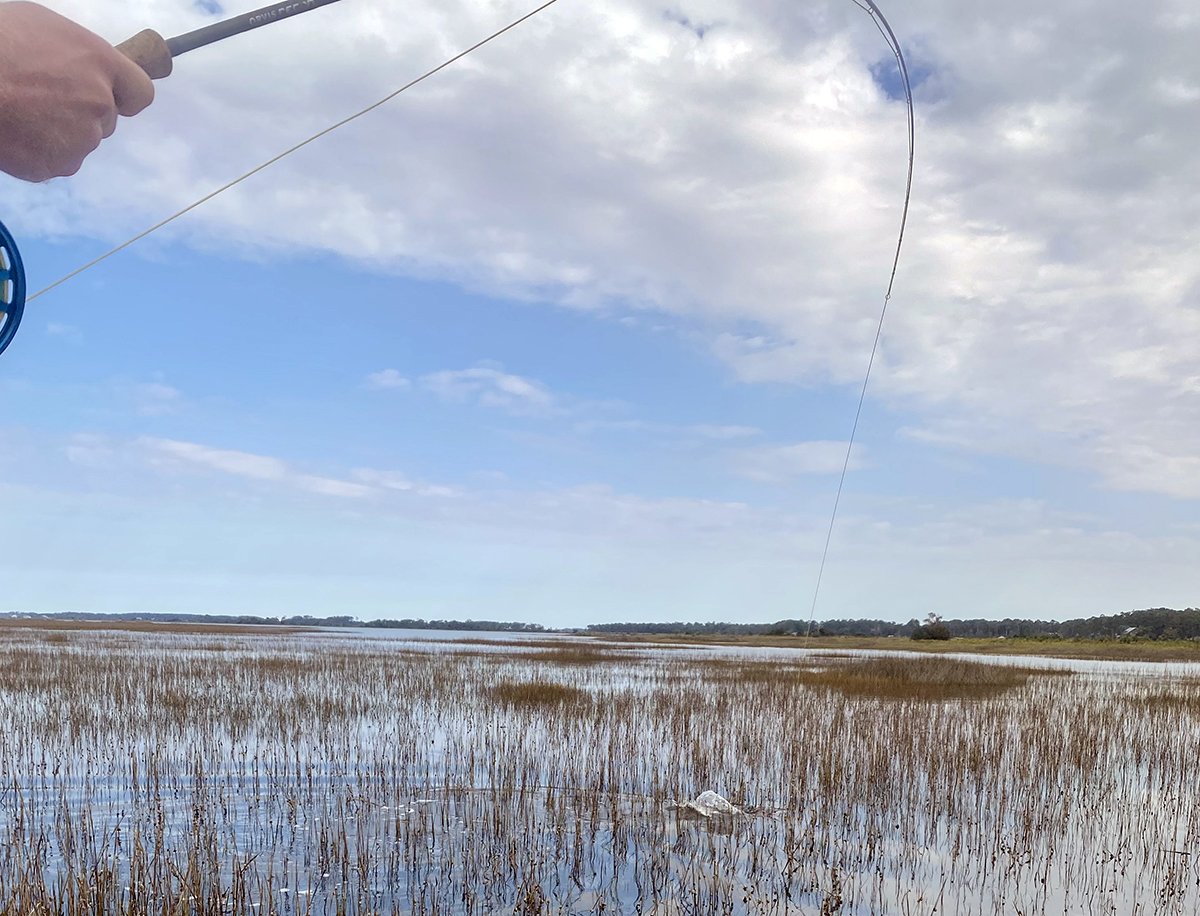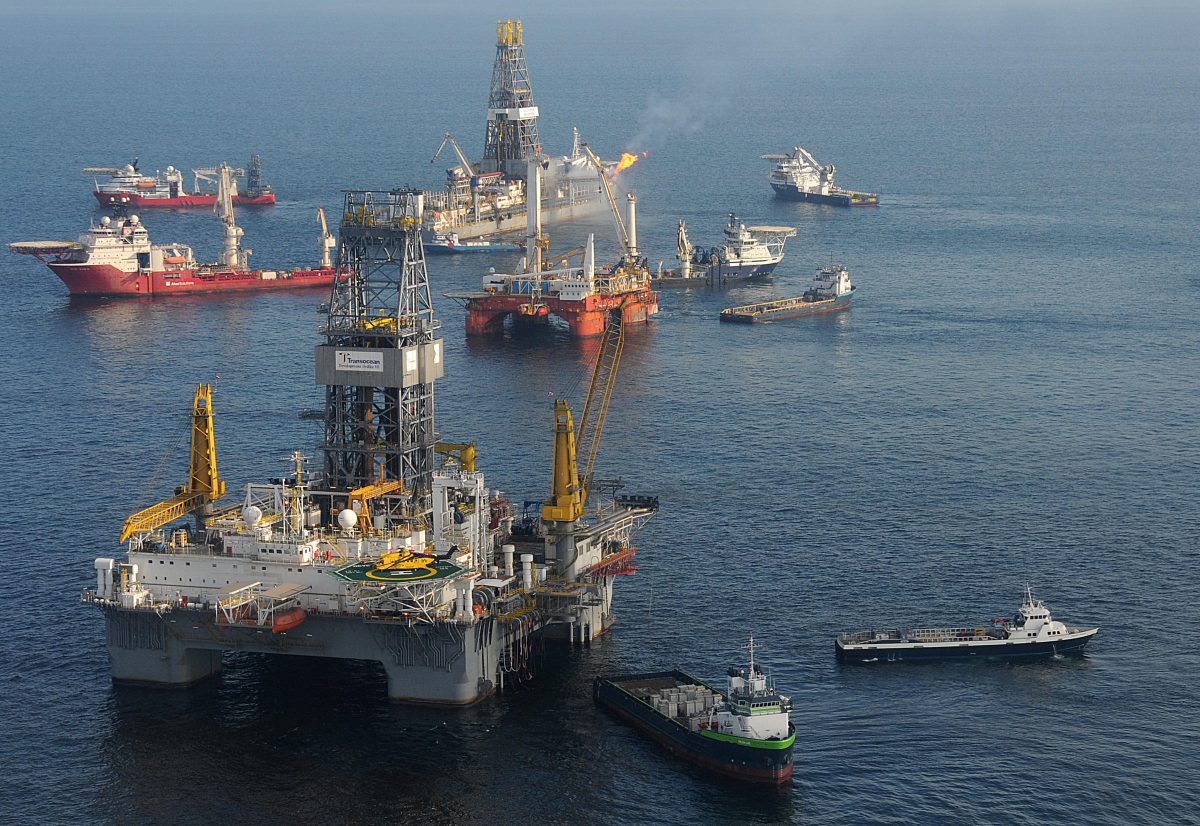
The skiff smoothly skimmed across the flat glassy marsh waters tinged yellow by the rising sun. Movement of the boat created a breeze that washed away the sticky humidity on this muggy summer morning. I was headed to Bear Island, the National Natural Landmark that is part of Hammocks Beach State Park, to assist with the banding of some migratory song birds.
When I got to the banding site, two men, hidden behind a wooden partition, had already prepared the banding materials and equipment. They were now passing the time swatting the biting flies and no-see-ums that were torturing any exposed skin. They listened and stared intently towards a cluster of wax myrtles and yaupons, waiting, waiting for the bird some call “the flying rainbow.”
Supporter Spotlight
Nonpareil, a word of French origin, is defined as better than any other, having no equal, of unequaled excellence, unmatched and above comparison. These are the words used to describe the radiant beauty of the small finch that brings a splash of color to coastal North Carolina each spring. In mid-April, these beauties begin showing up among the coastal maritime shrub thickets near and along the salty estuarine waters. A Native American legend tells the story of the Great Father painting the world, once finished, he used all the remaining paint to color this bird.
Painted buntings, which are in the same family of birds as cardinals, have two separate populations that inhabit the United States. A larger bunting population is found in the southern central states and a smaller eastern group ranges from Florida to North Carolina. Although a few vagabonds do sometimes stray farther north, such as the male that showed up last December in Brooklyn, N.Y., at Prospect Park. Here in the big city, this gaudy bird received the same celebrity status as if Bigfoot were to sashay down Broadway Avenue.
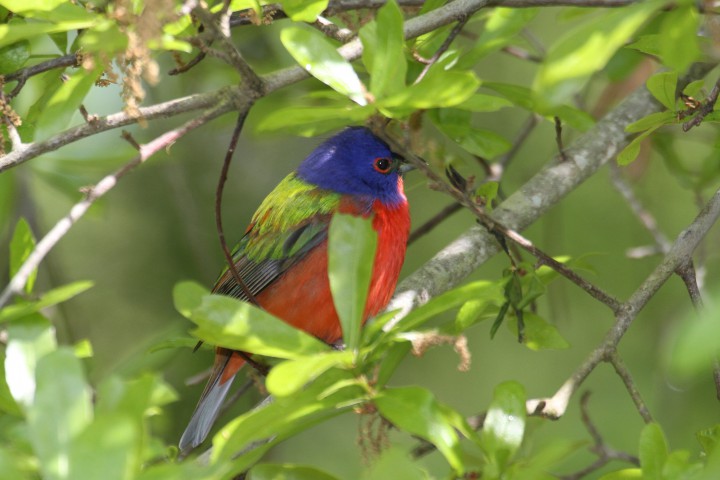
With their technicolor plumage that would cause a peacock to blush with envy, the flashy male painted bunting arrives early along the N.C. coast to establish and defend its territory. When not breeding, the male seems shy and modest, hiding its good looks among the twigs and branches of shrubs. However, during the spring, it is pleased with its exotic good looks and will sing a sweet, melodious song from an exposed perch to show off for the ladies. The females, however, remain silent. The male will repeatedly sing as many as 10 songs a minute to assert its dominance. Agitated males will engage in aerial fighting that may end up in a physical ground struggle to settle any disputes. The winner must continue to remain vigilant, driving out any intruders. Once boundaries, about three acres, have been established, the male can relax a bit and concentrate on singing its song to attract a mate.
While the striking male painted buntings get all the attention, the females are always downplayed and described as drab. But I find their tropical, yellow-tinged green color quite attractive. The juvenile birds of either sex are also a green color. This green coloration provides great camouflage for the nesting females and young birds to avoid detection by predators. The males will make their magical transformation after they molt during their second fall season.
When the females arrive, about a week after the males, they select a mate and the pair will search for a nest site among the protection of the maritime shrub thickets. The female builds the nest, and then incubates the three-four eggs, while the male takes care of feeding her. After hatching, the female feeds the hatchlings until they fledge about two week later, unless she nests for a second time. At this point, the male will take over feeding the first brood and the nesting female as well. Using their stout, V-shaped beak, they will feed on a variety of seeds and insects.
Supporter Spotlight
By August, the pressure is off of the males and their territorial rage has subsided. They can even be spotted feeding calmly together at bird feeders. After spending the summer breeding and raising their young, by mid-September they are headed to the southern tip of Florida, Cuba and other Caribbean islands. Once back on the wintering grounds, some of them cluster in groups that are referred to as a mural or palette due to their artistic colors.
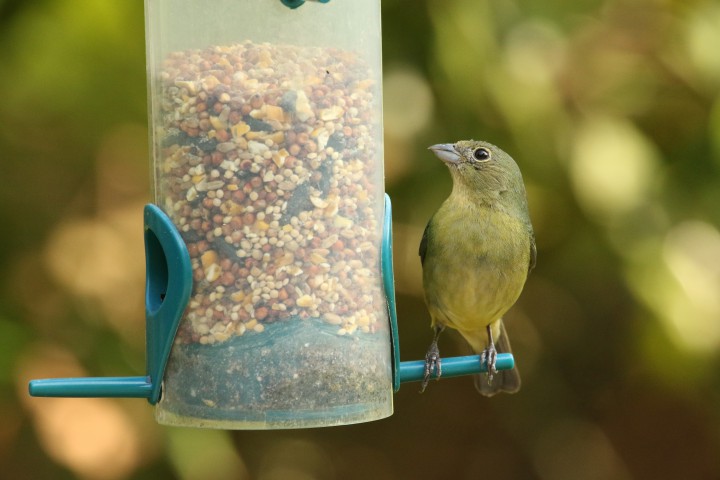
The arrival of painted buntings in North Carolina is celebrated every year by birdwatchers along the coast. Feeders are cleaned and filled with white millet, then strategically placed near a thicket edge where the birds have a quick escape to cover if threatened by larger birds. I hear stories of one-upmanship and bragging rights each summer as to who has the most painted buntings visiting their feeders. The breeding residents will range as far north as the tiny coastal village of Marshallberg in Carteret County. However, sightings of the bird at feeders in winter have been increasing over the years with sightings as far north as Buxton in Dare County. Enough winter sightings have occurred for it to almost be considered a winter resident.
These birds are in a bit of trouble though; their numbers have been in a steady decline for decades. Their favored habitat of maritime shrub thickets is disappearing. The eastern population of this species is most vulnerable to habitat loss, degradation and fragmentation due to the steady pace of continuing development along the coastal shorelines. However, residential and commercial properties can still be landscaped with native species and in a way to provide for the buntings.
Populations of the bird are also declining in the saddest way possible, the trapping and selling of wild male painted buntings. During the breeding season, the singing of a caged male painted bunting is used to entice a territorial wild bird into a trap, seizing the bird. They are then sold throughout Mexico, Central America, Cuba and Europe. Though it is illegal to possess these birds in the United States, they are readily available on the Florida black market. Every year arrests are made of people in possession of songbirds that are protected by the Migratory Bird Treaty Act. There is one amusing story of an individual that was prosecuted after posting photos of caged buntings on a Facebook site. Not only are the birds sold, but they are also held captive for tranquil gambling competitions. Once captured, they are held in cages and matched against each other in underground singing events where betting takes place. Bird song gambling, I swear, I’m not making this up. These matches, called a race, are where the first bird to sing an agreed-upon number of songs wins or where the bird that sings the longest song wins. Sometimes money is on the table, or in friendly bouts, a golden bird trophy is up for grabs.
The loss of habitat and the caged-bird trade has helped land the painted bunting on a number of dubious lists. In North Carolina, they are listed as a federal special concern species by the U.S. Fish and Wildlife Service, they have been designated as a watch list species by Partners in Flight, and BirdLife International has categorized them as near-threatened.
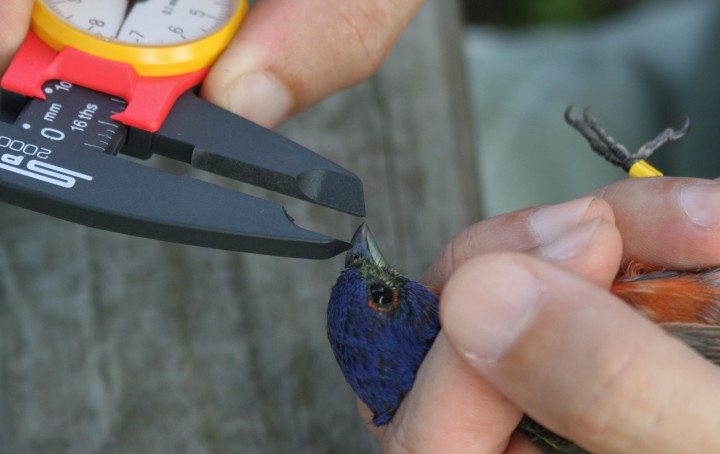
Fortunately, there are concerned people out there doing good things to help ensure the survival of these magnificent creatures. In 2005, bird conservation specialist, Dr. Jamie Rotenberg, assistant professor of Environmental Studies at the University of North Carolina-Wilmington, set out to learn more about the decline of the painted bunting. Knowing that two eyes are better than one, he spearheaded the organization of what is now known as the Painted Bunting Observer Team. Their website states “PBOT’s goal is to observe, record, and catalogue sightings of this beautiful bird, whose population has been in decline for several decades.” Dr. Rotenberg has coordinated a network of “citizen scientists” to observe and record information such as date, location, time and individual numbers of the birds along the east coast from North Carolina to Florida. He has also banded hundreds of painted buntings at numerous sites and will soon be publishing his findings that include the data collected by the team.
Back on Bear Island, Keith Jensen and Ed Dombrofski were banding the buntings through the direction of John Gerwin with the N.C. Museum of Natural Science. Over a period of weeks, the birds are enticed to frequent feeders filled with tasty millet. On banding days, a cage with a feeder is placed at the same spot. At first the birds are confused by the different feeder, but they eventually figure out how to reach the seed. Once inside the cage, the birds are trapped similar to a crab pot. Keith and Ed delicately remove the birds and conduct a physical exam, recording data including weight, age, sex and measurements of their wing, bill and fat accumulation. Each bird receives an aluminum band with a unique identification number as well as three colored bands that reference where it was banded. The banded birds will help the citizen scientist’s better document the bird’s behavior giving insight into their migration routes, reproduction, life span and population estimates.
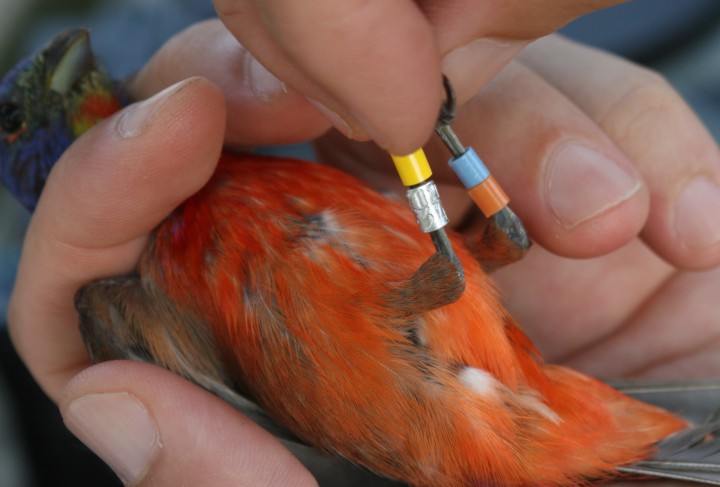
On this day, the bird was then handed over to a researcher from the University of Oklahoma to be fitted with a light-sensitive geolocator. As the buntings migrate in late summer, the geolocator will record the length of day and night for each day. The amount of day and night on a given day can then be calculated to reveal the latitude and longitude to pinpoint a specific location. In the coming years, if the bird is recaptured, the device will be retrieved. The collected data will give a better understanding of migratory routes and where habitat conservation efforts should be targeted.
As the morning temperatures increased to a sizzle, the buntings abandoned the feeder for a favorable retreat into the deep shade of the shrubs. As the researchers put away their banding gear, I was thankful for these individuals that have a deep respect and love for our wildlife. Their work will go a long way to hopefully ensuring that we will always be able to enjoy the magnificence of the painted bunting.
If you live along the coast, near salt or brackish water, set out a cage type bird feeder, one that provides protection from larger birds, fill it with white millet and be on the lookout for what the early Spanish explorers called “mariposa pintada” which translates to “a painted butterfly.”
Learn More
- Painted Bunting Observer Team
- Eastern Painted Bunting Population Assessment and Monitoring Project
- Audubon Guide to North American Birds





